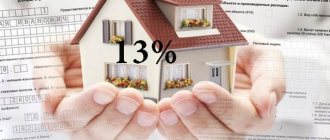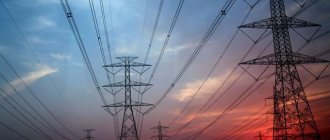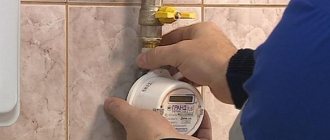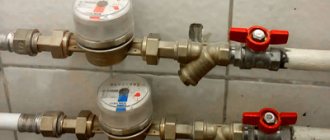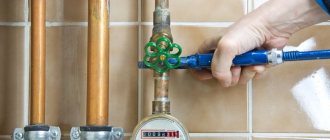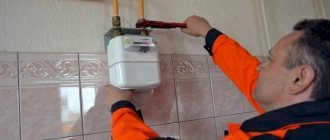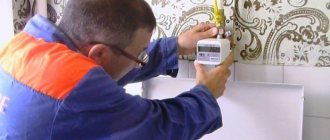- June 3, 2020
- Tools and equipment
- Yulia Tolok
In many EU countries, two-tariff meters are not uncommon. They often provide an opportunity to reduce energy costs with minimal investment. But the question of which meter is better—a single-tariff meter or a two-tariff meter—does not always have a clear answer.
It should be understood that peak loads in the system occur from 7 to 10 am from 19 to 23 pm. And to get the benefit, you need to consume electricity from 11 pm to 7 am, and it is to record these indicators that two-tariff devices are used. As a result, there are two indicators, calculated at different rates.
Not so long ago, similar devices began to be installed in our country. This differentiation of accounting helps achieve several important aspects:
- Reduce the load on the power grid during peak periods.
- Reduce the cost of energy consumption.
Moreover, if the second directly applies only to consumers, then the first is in the interests of the state. So which electricity meter is better - single-tariff or dual-tariff.
Multi-tariff devices have significant advantages. But, as it turns out, their purchase is not always justified, which is associated with the overall use of electricity, the ability to consume it in significant quantities at night, and the cost of installing the device itself.
Determining whether there is a benefit
Before you understand whether it makes sense to install a two-tariff meter, you need to answer several questions for yourself and determine:
- what is the price difference between temporary tariffs;
- how often do you have to use powerful devices;
- what is the cost of adjusting the meter clock;
- what is the difference in the cost of a single-tariff and multi-tariff metering device.
The solution to these issues begins with a trip to the organization that supplies electricity. It can clarify whether there is a division into tariffs depending on the time of day and the cost of each time interval. It also follows how these data may change in the near future.
Next you need to find out about adjusting the meter clock. What it should be like, how long it takes and how much it costs.
Multi-tariff devices have a special device built into them that prohibits the connection of a certain number of devices during peak load. It is limited in power; before purchasing, it is important to determine whether it will withstand all household appliances that you plan to turn on at the same time.
It is also necessary to evaluate which household appliances can be safely and painlessly operated during grace periods. After this, weigh the pros and cons and decide whether to install a single-tariff or double-tariff meter.
The principle of removing and calculating consumed electricity
Due to the fact that some models are not equipped with an automatic data transfer system, it is necessary to find out how readings are taken from a two-tariff meter. To do this you will need:
- Click on “Enter” and write down the readings that appear under the letter “T”. Under the number “1” data is given for the daytime tariff, “2” for the night rate. Three-tariff electricity meters also have a “3”.
- Subtract the data for the previous month for each tariff from the current readings.
- Multiply the resulting figures by the cost of one kilowatt for each tariff.
- Add up the resulting numbers.
When calculating payments for utility services, it is recommended not to take into account those numbers that will appear after the decimal point. This will complicate the calculation of readings.
Advantages of multi-tariff devices
The main distinguishing feature of multi-tariff devices is the absence of moving parts. The consumption assessment is carried out thanks to a small number of electronic components. They provide an opportunity to assess the current state of the network. Which meter is better - single-tariff or double-tariff, can be determined by the main advantages of the latter:
- obtaining a number of indicators;
- programming capability;
- measurement accuracy;
- connection to a central control system;
- long inter-inspection period (in some devices it can be up to 10 years inclusive).
Typically, electronic electricity meters have an ergonomic design and several types of mounting so that installation can be quickly carried out in any conditions.
The optimal choice in terms of cost and accuracy are second-class devices.
Three-tariff meters
Before deciding which meter to install - single-tariff or two-tariff, you should consider purchasing a three-tariff meter. In two-tariff devices, calculations are carried out over two time periods: day and night. Three-tariff models are equipped with a more complex program. They divide the day into several zones:
- Daytime. Payment is made according to the standard rate.
- Night. Provides savings of up to 70% in terms of volume used.
- Peak. Has several periods. The first is from 7 a.m. to 10 a.m., and the second from 8 p.m. to 11 p.m. During this period, the cost of used electricity increases by 70%.
It should be understood that the cost of different tariff zones may not be the same in the regions. In addition, the division into three zones is not always supported. And in this case, the question of which meter is better—three-tariff or two-tariff—becomes irrelevant.
With such a distribution of tariffs, during peak periods it is better to use electricity to a minimum, and turn on the main equipment at night. In this case, the savings will be significant. But everyone must determine for themselves which meter is better - three-tariff or two-tariff.
The introduction of such conditions for using the device is due to the heavy load on power lines during peak hours. Therefore, there is a benefit here for both the consumer and the state. The algorithm for selecting a three-tariff meter will be the same as for a two-tariff one. First of all, find out everything about the difference in the cost of electricity. Secondly, about the cost of the device and its installation/configuration. And analyze the possibility of refusing to use most devices during peak hours.
How do you know if it is profitable for you to take a meter with two tariffs?
To combine a comfortable life and low electricity bills, you don’t need to adjust to the meter. All you have to do is choose a device that suits your needs. To understand whether installing a two-tariff electric meter is beneficial for you, you need to complete three steps:
- Calculate at what ratio of night and day electricity consumption (when calculating according to two tariff plans) the payment will be equal to what is considered one rate (at one tariff);
- Calculate the average actual electricity consumption at night and during the day;
- Compare the actual ratio of nighttime to daytime consumption with what was calculated in point 1.
If the actual night-to-day ratio is less than the calculated one, then having an electric meter with two tariff plans is unprofitable. If they are equal, then it makes no difference what kind of counting device you have. You will notice the benefit only when the actual ratio of night to day is greater than the calculated ratio.
Definition of design ratio
To do this, you need to know how much 1 kWh of electricity costs:
- For single-rate payment (OO);
- At night (BUT);
- During the day (BEFORE).
Calculation procedure:
- Find the difference between OO and NO;
- Find the difference between DO and OO;
- Divide the result of action 1 by the result of action 2;
- Add 3 units to the result;
- Divide one by the result of action 4;
- Multiply the number obtained after step 5 by 100. This will be the calculated ratio (RO) of night-time energy consumption to daytime, at which the payment for electricity at least does not increase when installing a two-tariff meter.
This can be expressed in one formula, but it is complex:
Example . OO - 3.6 rubles per 1 kW*hour, NO - 1.8, and DO - 3.9 rubles. We find the difference between OO and HO - this is 1.8. Then we find the difference between DO and OO - this is 0.3. Now divide 1.8 by 0.3. We get 6. Add 1 - now we have 7. Divide 1 by 7 and get approximately 0.14. And multiplying by 100%, we get 14%. This means that your nighttime energy consumption must be at least 14% of the total (day + night), so that installing a meter with two tariffs does not hit your pocket.
Definition of actual ratio
Now you need to find out how much electricity you actually spend at night and during the day. To do this, take readings twice every day for one month at exactly 7.00 and 23.00. Then, by subtracting the penultimate reading from the last, calculate how much you spend on average during the day and how much at night. It is convenient to record data in a table, as in the figure below.
Average daily flow rate (ADF) is the sum of all daily readings divided by the number of days in a month. The average night consumption value (ANV) is the sum of all night readings, also divided by the number of days in a month.
The actual ratio (FR) is found using the formula:
Example from the table : SZDR = 7, and SZNR = 3. Then FO = 3/(3+7)*100% = 30%.
Comparison of calculated ratio with actual ratio
How do you know that single-phase, two-tariff electric meters will bring benefits? We need to compare the relationships we obtained: RO with FO. Three cases are possible:
- RO>FO. Your costs will increase when installing an electric meter with two tariffs. You don't need this;
- RO=FO. Costs will remain the same. There is no point in reinstalling;
- RO<FO. The transition to two-tariff payment will bring economic benefits.
Example . Our RO is 14%, and FO is 30%. This is the third case, which says that a two-tariff electric meter will help us save money when paying for electricity.
Parameters for choosing a two-tariff meter
Before you understand which meter is better - a single-tariff or a two-tariff, you should find out whether it is possible to pay for electricity by zone in your area. Since a multi-tariff meter is much more expensive than a regular one, its purchase must be justified.
The number of tariff levels should also be clarified; it happens that there are more than two of them. It is also possible that the gradation increases, for example, adding weekends and weekdays, or different tariffs for the seasons. This has already been implemented in several European countries, but similar experiments are periodically carried out in our country.
In addition, there are other parameters that you should pay attention to.
Differences between meters based on operating principle
If you understand how a two-tariff meter differs from a single-tariff meter, you should consider their operating principle. According to the principle of operation, meters are conventionally divided into two large groups - induction and electronic. Not so long ago, induction meters were installed everywhere. Their principle of operation is as follows: a current passes through the coils of the device, which creates an electromagnetic field that triggers the rotation of the disk associated with a mechanical counting device.
The operating principle of single-tariff or dual-tariff electronic electricity meters is somewhat different. The circuit contains semiconductor elements that convert the passing current into a pulse signal transmitted to the counting device.
In this case, the indication can also be provided electromechanically, but the transmission of rotation to the wheel, which counts the amount of electricity consumed, is carried out through a stepper electric drive that reacts to the pulses generated by the circuit. More modern devices provide an electronic digital display.
Multi-tariff meters, as is obvious, can only have an electronic principle of operation and are always equipped with a digital display. A programming function must be available for them, allowing you to set time intervals for electricity counting.
The LCD displays used in them require certain conditions for normal operation, such as the absence of direct sunlight or low temperatures. In the latter case, they may simply stop transmitting information, even if the meter circuit itself correctly calculates consumption. Therefore, in a private house they are installed only indoors. The latter has some disadvantages. If the data from the meter is not transferred to the system, then inspectors will have to manually go and record readings, and the consumer will have to regularly provide access to housing.
Popular models
Today, three models of two-tariff meters are most in demand on the market - MZIP, Energomera and Mercury. Let's take a closer look at them.
Mercury
Mercury meters are produced by , which produces a wide range of metering devices - from conventional 1-phase devices to more complex 3-phase models.
The products are manufactured at a high technical and scientific level, which makes NPK Incotex one of the best companies today.
Now the company produces other products - cash registers, automated accounting and control systems, various types of screens and displays, POS and other equipment.
Popular multi-tariff meters include the following Mercury models:
- Three-phase - 256 ART, 234 ARM (2), 230 ART, 231 AT, 231 ART Sh.
- Single-phase - 206, 203.2T, 201.8 TLO, 200.
Official website of the company https://www.incotexcom.ru/.
Energy meter
The Energomera company positions itself as the Russian market leader in the production of metering devices. Every year, more than 3 million metering devices are produced at the enterprise's factories. Moreover, over 20 years of operation, more than 30 million devices have been produced.
The company includes 4 factories and 1 institute. In addition to two-tariff meters, the company produces ASKUE systems, low-voltage equipment, metrological and switchboard equipment, devices for electrochemical protection and other equipment.
Popular models of multi-tariff meters include:
- Single-phase - CE 102-R5.1, CE 102M-R5, CE 102-S7, CE 102M-S7, CE 201-S7.
- Three-phase - CE 307-R33, CE 301-R33, CE 307-S31, CE 303-R33, CE 303-S31.
Official website of the company https://www.energomera.ru/.
MZEP
At the moment, the Moscow MZEP plant is considered one of the best in the field of manufacturing metering devices. Every month, the plant produces more than 100,000 devices, which are used both in private homes and in large organizations.
The company's products are certified and meet internationally accepted quality standards. Before sale, the plant's two-tariff meters are tested by the metrological service, and their compliance with the requirements is confirmed by certificates.
Popular multi-tariff models of the manufacturer:
- Single-phase - AGAT 2-12, AGAT 2-23M, AGAT 2-23M1, AGAT 2-27M, AGAT 2-42.
- Three-phase - AGAT 3-1.100.2, AGAT 3-1.5.2, AGAT 3-1.50.2, AGAT 3-3.100.5, AGAT 3-3.60.2.
Official website of the company https://mzep.ru/.
Accuracy class
The indicator displays the possible error of the device and is expressed as a percentage. Induction meters in most cases had a class of 2.5. Whereas electronic devices usually have a higher class - 2, 1, 0.5 and higher, regardless of whether you choose a single-tariff or double-tariff electricity meter.
The accuracy class can be viewed both on the device itself and in the technical documentation. Usually it takes the form of a pictogram in the form of a number enclosed in a circle.
Obviously, the higher the accuracy class, the more expensive the device. And here it is necessary to understand one more important subtlety. Often, electrical network workers require the purchase of a device with high accuracy, for example, 1 or even 0.5. This is not justified; there is government decree No. 442 of May 4, 2012, which determines that accuracy class 2 or higher is established for private consumers in apartment buildings or private buildings. Class 1 is only required if the system load is above 670 kW, which is practically impossible under such conditions.
The same decree states that if there is an installed measuring device with a lower accuracy class, then it must be replaced only after the test interval has expired or it has failed. Thus, workers' demands to replace the meter with a more accurate one are illegal.
Illegal but effective methods
What methods are they trying to use to save energy? First of all, of course, everyone is trying to find a neodymium magnet that will stop the counter or slow down its counting mechanism; old-style counters respond well to a powerful magnetic field and stop. Modern counters already produce antimagnetic ones that can withstand a magnetic field up to a certain strength. Also among the illegal methods of saving electricity, you can find electric meters with a remote control, which allow you to reduce your electricity bill by 30, 50 and 70% at any time. But there are many nuances with the failure of meters, and on some, external influences can be recorded in the corresponding indicators.
Single-phase, three-phase, maximum current
The question of which meter to install—one-tariff or two-tariff—may not be the only one. Most city apartments or private houses are connected to a single-phase 220 V network with a frequency of 50 Hz. These are the indicators that the counter should meet. However, there are also connections to a three-phase network. This usually becomes necessary in apartments or private houses with electric heating or stationary electric stoves. In this case, special sockets and plugs are installed in the house, on more powerful cables.
If you have a three-phase connection, you will have to purchase a corresponding meter. Some three-phase meters can be connected to a single-phase network, which greatly expands their versatility.
In addition, for each meter, parameters such as rated and maximum load current are determined. As a rule, they are designed for a maximum permissible value of 60 A, which corresponds to 10 kW. This is quite enough for most cases. However, if the total load can exceed 10 kW, then you should purchase a meter with a maximum current value of 100 A. Typically, such devices are connected directly to the network without the use of additional converters.
All these indicators are indicated on the front panel of the device or in its technical data sheet.
Communication Interfaces
As power grids develop, new requirements are introduced for consumption metering systems - automation and connection interfaces. The latter are necessary for transmitting meter readings to local stations and to a unified center, including other types of devices for counting consumed services. For this they use power lines or GSM networks.
The purchase of such an electricity meter, single-tariff or dual-tariff, will be considered expedient only if such automation is introduced in the near future in a local energy-saving organization. In addition, if such an innovation is planned, then you should consider purchasing such a counting device in advance so that you do not have to change it later.
Additional options
In addition to separate tariffs, modern electronic meters can have a number of other additional options. They are the difference between a single-tariff meter and a two-tariff meter. These include:
- entering monthly indicators into memory cells;
- transferring data to a computer;
- taking instant readings – current consumption, voltage, active power at a moment in time.
- Logging of peak consumption points, voltage surges, phase measurements and much more.
But, as practice shows, most of these functions remain unclaimed for household consumers.
Differences by installation type
When choosing a meter, it is necessary to take into account not only which meter is better - a three-tariff or two-tariff one, but also its design features, and, first of all, the method of installation in the distribution board. Old devices were installed using old screw fastenings at three points, for which mounting holes were provided on the devices themselves, and threaded sockets on the panels.
A more modern option for mounting a switchboard with a device is installation on a DIN rail. In this case, there is a shaped groove on the meter with a lock that helps to secure it to a standard profile rail.
Some models may provide the ability to use both types of fastening. Moreover, the same device circuit can be housed in different housings.
When building a private house or during a major renovation of an apartment, many people prefer modern plastic boxes of an external or built-in type with the meter and other elements mounted on DIN rails. But which meter is better - a single-tariff meter or a two-tariff meter, everyone decides for himself.
Reviews
Most users respond positively to two-tariff meters. In some cases, according to established practice, they can save up to 500 rubles or more. But there are also those who did not receive benefits after applying such a solution.
Negative reviews are usually left by those who were unable to independently calculate in advance the presence or absence of benefits. It is also important to remember that in different conditions the device has different payback. Sometimes this process drags on for several years or more.
Multi-tariff meters, which are being developed in Russia, are of interest to modern buyers. But for each device, payback along with profit must be calculated individually. Only in this case will it be easy to determine whether it is profitable to install two-tariff electricity meters.
Pros and cons of a two-tariff electricity meter, will there be savings after installation:
See also Phone numbers for consultation July 30, 2021 kasjanenko 914
Share this post
Discussion: 3 comments
- Alena F. says:
09.28.2018 at 10:37In order to benefit from installing a two-tariff meter, you must also have “unworthy” household appliances. We have an old washing machine - 19 years old, a real Siemens, it works perfectly - but it doesn’t know how to turn itself off and when it finishes washing, it works in standby mode. Therefore, for a month including it at 23-24 hours, I did not see any savings.
Answer
- Elena says:
12/04/2018 at 09:13
This is a dubious pleasure... It turns out what needs to be done at night: laundry, washing dishes, ironing, boiling water in thermoses for tomorrow, and preparing the first, second, third while cheap electricity. When to sleep and when to live? If we are talking about a washing machine and dishwasher turned on at night, you won’t save much, now appliances consume electricity extremely sparingly. And during the day you can use all this.
Answer
- Ekaterina says:
01/08/2019 at 00:43
And we have a two-tariff meter, but it has not been reprogrammed after the cancellation of the summer/winter time switch. At whose expense should this be done? The meter is located at the entrance and the readings are always taken by the chairman of the HOA.
Answer
What to look for when purchasing
First of all, it is worth paying attention to the fact that such devices should not be purchased from organizations that do not have the appropriate state certification or from random individuals. It is also necessary to abandon the idea of purchasing a used device. It, of course, costs less, but there may be problems with verification and installation.
A reasonable approach is to contact your local energy sales organization. They may offer to purchase a meter from them or tell you which models are most recommended for installation.
Connection diagram
The connection diagram for electricity metering devices depends on the design features of the device. Single-phase models are more often purchased by apartment owners. Therefore, it is worth considering the installation features of this type of electricity meters.
Important: before starting work, you should turn off the power to the machines or turn off the switch.
The energy metering device is connected according to the instructions. The terminal block contains 4 contacts for phase and zero input and output. That is, the former are connected to the machine, the wires from which go to the external network, and the latter to the internal network.
Attention: it is recommended to entrust the connection of the electric meter to the employees of the energy supply organization. A number of companies are ready to compensate for the costs of purchasing and installing the device if the consumer switches to another tariff plan.
In addition to the indicated electricity meters, semi-indirect and indirect switching devices are found in stores. Both devices require a transformer. Therefore, installing such meters without specialized knowledge is impossible.



